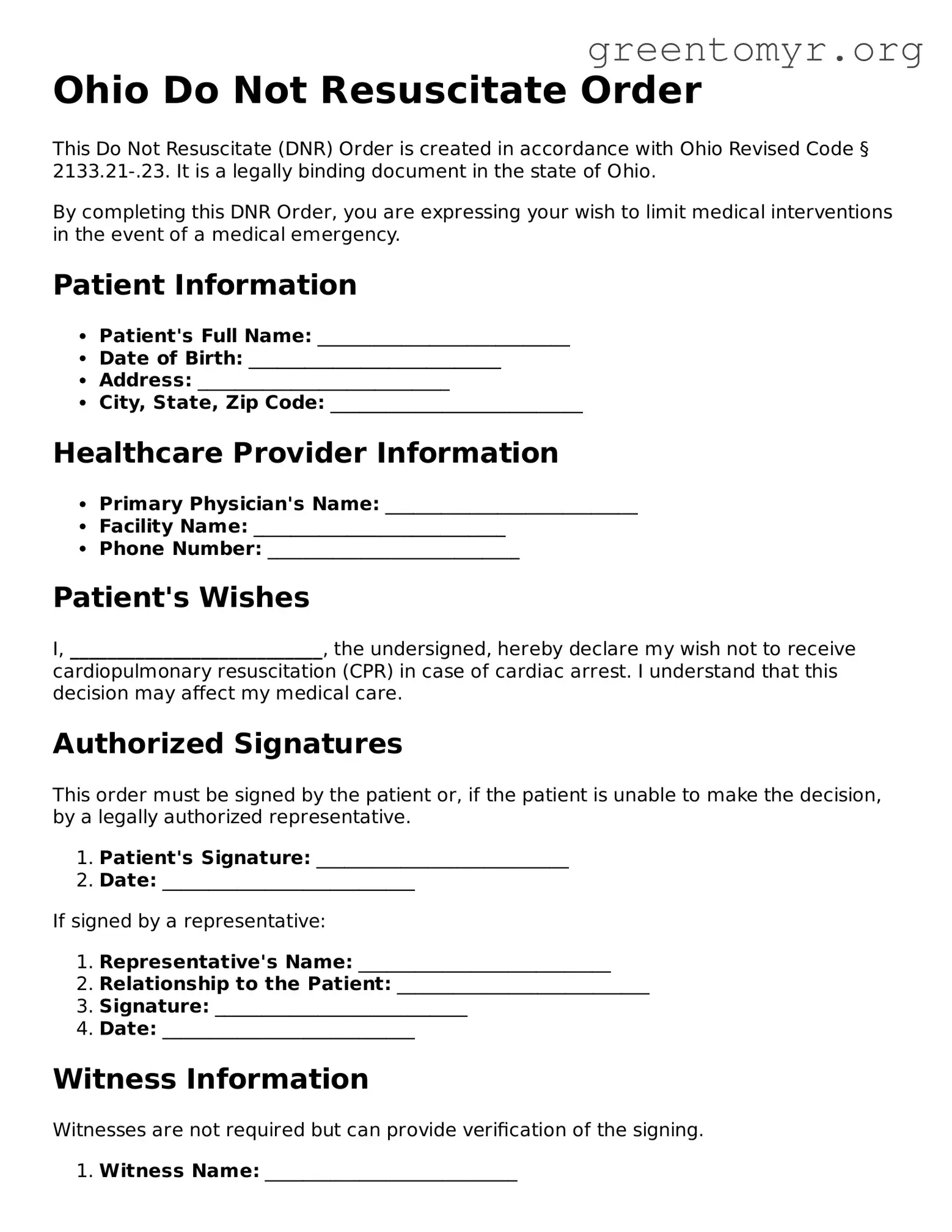Ohio Do Not Resuscitate Order
This Do Not Resuscitate (DNR) Order is created in accordance with Ohio Revised Code § 2133.21-.23. It is a legally binding document in the state of Ohio.
By completing this DNR Order, you are expressing your wish to limit medical interventions in the event of a medical emergency.
Patient Information
- Patient's Full Name: ___________________________
- Date of Birth: ___________________________
- Address: ___________________________
- City, State, Zip Code: ___________________________
Healthcare Provider Information
- Primary Physician's Name: ___________________________
- Facility Name: ___________________________
- Phone Number: ___________________________
Patient's Wishes
I, ___________________________, the undersigned, hereby declare my wish not to receive cardiopulmonary resuscitation (CPR) in case of cardiac arrest. I understand that this decision may affect my medical care.
Authorized Signatures
This order must be signed by the patient or, if the patient is unable to make the decision, by a legally authorized representative.
- Patient's Signature: ___________________________
- Date: ___________________________
If signed by a representative:
- Representative's Name: ___________________________
- Relationship to the Patient: ___________________________
- Signature: ___________________________
- Date: ___________________________
Witness Information
Witnesses are not required but can provide verification of the signing.
- Witness Name: ___________________________
- Signature: ___________________________
- Date: ___________________________
This Do Not Resuscitate Order will remain effective until it is revoked in writing by the patient or an authorized representative.
